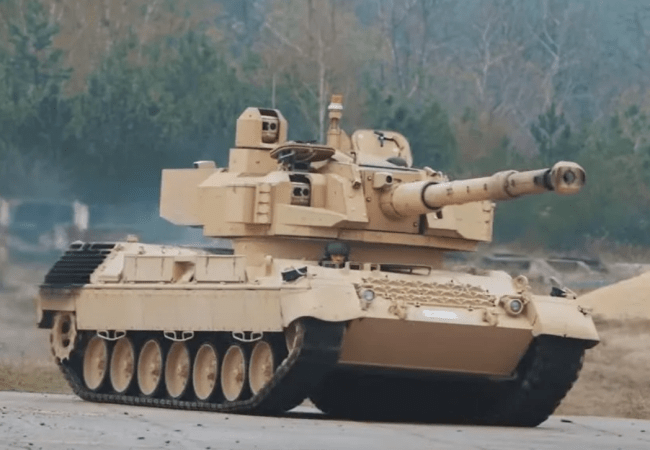
Key Lessons from Omaha Beach
- Accurate Intelligence is Mission-Critical
- Misjudging enemy strength, terrain, and defensive capabilities led to flawed assault planning.
- The 352nd Infantry Division’s presence at Omaha was not anticipated, turning the beach into a deadly trap.
- Pre-Set Plans Must Allow Tactical Flexibility
- Rigid operational doctrine prevented real-time adjustments, delaying responses to unexpected resistance and mislandings.
- Planners failed to empower field commanders with enough autonomy to adapt.
- Reconnaissance Must Go Beyond Aerial Surveys
- Lack of ground-level reconnaissance led to poor understanding of beach obstacles, underwater hazards, and defensible exits.
- Innovations Must Be Embraced, Not Rejected
- American commanders dismissed British engineering marvels like Hobart’s Funnies and X-craft despite their proven effectiveness.
- This decision caused avoidable delays, increased exposure, and higher casualties.
- Lane Marking Saves Lives
- The absence of clearly marked landing lanes at Omaha caused widespread mislandings, unit fragmentation, and coordination breakdowns.
- Overreliance on Bombardment is a Flawed Strategy
- Air and naval bombardments were assumed to suppress German defences, but poor weather and entrenched positions made them largely ineffective.
- The first waves landed under full enemy fire without adequate support.
- Joint Operations Require True Integration
- Inter-Allied rivalry and institutional pride blocked the use of British resources and expertise, weakening overall cohesion and effectiveness.
- Narrative Control Can Hinder Institutional Learning
- Post-war accounts ignored or downplayed key failures, delaying the U.S. military’s willingness to reform and adapt.
- Victory Should Not Obscure the Cost of Mistakes
- Omaha Beach was won through sacrifice and improvisation, not superior planning. Its success masked deep systemic failures that must not be repeated.
- Future Conflicts Will Punish Doctrinal Inertia
|

Key Predictions
-
Tanks Will Regain Dominance—If Properly Equipped
The age of the tank is not over. Tanks fitted with Active Protection Systems (APS), electronic warfare tools, and drone-resistant features will be crucial on the modern battlefield.
-
APS Will Become Standard on All Armoured Platforms
From MBTs to APCs and artillery, APS will become a baseline requirement. Britain, among others, must accelerate APS integration across its armoured forces to remain viable.
-
Drone-Survivable Armour Will Be a Battlefield Game-Changer
Hybrid platforms like the Leopard 1A5/Cockerill 3105 will prove that older hulls can be transformed into cutting-edge systems with smart turrets and APS, enabling cost-effective battlefield resilience.
-
Armoured Formations Will Evolve into Networked ‘Land Fleets’
Future formations will combine APS, EMP weapons, SHORAD, and AI-driven drone reconnaissance to move faster than enemy decision cycles—reintroducing manoeuvre warfare at scale.
-
The Nation That Masters This Transformation First Will Prevail
Just as combined arms tactics reshaped WWI at Amiens, the first country to field fully-networked, APS-protected, drone-integrated armoured brigades opperating under air dominance will redefine ground warfare and secure decisive battlefield superiority.
|

Key Predictions
- Escalation in Russian Aerial Assaults
Russia will continue to escalate its missile and drone campaigns against Ukraine’s infrastructure to exploit Ukraine’s current air defence gaps, particularly before winter.
- Increased NATO Air Readiness Near Ukraine
NATO will continue to maintain elevated air readiness, especially in Poland and Romania, with potential for intercept operations in the event of near-border overspill.
- Ukrainian Push for ‘Sky Shield’ Intensifies
Kyiv will ramp up diplomatic pressure for NATO to deploy a ‘Sky Shield’-like system over Ukrainian airspace—combining Patriot, IRIS-T, and THAAD with enhanced ISR support.
- Partial NATO Air Integration
Select NATO members may begin limited deployments of missile defence systems to Ukraine’s western regions, starting with radar-based early-warning integration and layered short/medium-range systems.
- NATO Air Superiority Strategy Evolution
NATO doctrine will increasingly adopt Israel-style integrated air defence and rapid-response kill chains as standard against hybrid aerial threats like drones and cruise missiles.
- SEAD/DEAD Missions Become Central to NATO Strategy
The success of Israel’s offensive operations against Russian-designed air defences in Iran will reinforce the necessity of a future strategy of NATO using stealth aircraft and UAVs for pre-emptive strikes against Russian SAM sites.
- Forward Deployment of NATO Fighters
The permanent deployment of F-35s, Eurofighters, and F-15s in forward positions (e.g., Romania, Baltic states) would be needed to create no-fly deterrence zones bordering Ukraine.
- Air Superiority Seen as Decisive for Conflict Endgame
Strategic consensus will grow that air dominance—more than land operations—will determine the future of the Ukraine war, pushing NATO to treat airspace as the primary theatre of control.
|

Key Predictions
-
Global bond markets are heading for a major decline, with the U.S. and UK especially vulnerable due to structural debt and inflation issues.
-
U.S. debt issuance will accelerate under a potential Trump administration, likely triggering a historic wave of issuance and potentially leading to default or restructuring.
-
Inflation is far higher than officially reported due to changes in statistical methods (e.g., substitution, hedonic adjustments, and exclusion of housing/energy costs).
-
UK inflation metrics have also been downplayed, particularly since the switch from RPI to CPI in 2003, leaving real cost-of-living increases underreported.
-
China is gaining a major strategic advantage by borrowing at lower rates, enabling it to finance its military and geopolitical ambitions far more efficiently than the U.S.
-
An escalation in global conflict—effectively a third world war—is already underway, with proxy wars in Ukraine and Israel, and ahead we face a potential flashpoint involving Iran’s nuclear facilities and Chinese action in Asia.
-
A new oil price shock is likely, triggered by the closure of the Strait of Hormuz, which could choke global supply and cause inflation to spike sharply.
-
Traditional 60/40 portfolios are highly exposed, with bonds becoming a liability and equities vulnerable to systemic shocks.
-
Interest rates will rise sharply, making it prudent for borrowers to lock in low rates and extend loan maturities.
-
Western economies are facing a prolonged period of crisis, necessitating a defensive financial strategy and caution against overleveraging.
|

Key Predictions
-
A Major Chinese Military Exercise Will Morph into Invasion: The PLA is likely to initiate a large-scale exercise under the guise of regular drills, which will suddenly transition into an invasion, possibly as a surprise move akin to a “Pearl Harbour 2” scenario within the Third Island Chain.
-
Kinetic War Is Imminent: We predict that this confrontation will escalate into a full-scale war within the year, as China’s strategic calculus has shifted toward decisive action under the belief that the regional and global balance of power now favours Beijing.
-
Flashpoint in the Taiwan Strait: The immediate trigger will likely involve naval encirclement, airspace penetration, or hybrid operations, forcing Taiwan into a defensive posture while dragging in regional actors.
-
U.S. and Allies Will Be Forced to Respond: The arrival of U.S. Harpoon missile systems and deepening Taiwan–U.S. defence coordination will make American inaction politically and strategically untenable, further widening the conflict.
-
Political Realignment in Taiwan: The DPP may consolidate legislative control following the recall of KMT lawmakers, enabling the passage of more assertive sovereignty legislation, but also accelerating Beijing’s timeline for military action.
-
Broader Indo-Pacific Instability: This conflict will not be contained to Taiwan. It is expected to trigger a chain reaction of regional confrontations, reshaping the strategic order and forcing major recalibrations by Japan, Australia, and ASEAN powers.
|


















